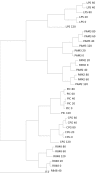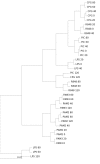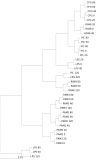Simcluster: clustering enumeration gene expression data on the simplex space
- PMID: 17625017
- PMCID: PMC2147035
- DOI: 10.1186/1471-2105-8-246
Simcluster: clustering enumeration gene expression data on the simplex space
Abstract
Background: Transcript enumeration methods such as SAGE, MPSS, and sequencing-by-synthesis EST "digital northern", are important high-throughput techniques for digital gene expression measurement. As other counting or voting processes, these measurements constitute compositional data exhibiting properties particular to the simplex space where the summation of the components is constrained. These properties are not present on regular Euclidean spaces, on which hybridization-based microarray data is often modeled. Therefore, pattern recognition methods commonly used for microarray data analysis may be non-informative for the data generated by transcript enumeration techniques since they ignore certain fundamental properties of this space.
Results: Here we present a software tool, Simcluster, designed to perform clustering analysis for data on the simplex space. We present Simcluster as a stand-alone command-line C package and as a user-friendly on-line tool. Both versions are available at: http://xerad.systemsbiology.net/simcluster.
Conclusion: Simcluster is designed in accordance with a well-established mathematical framework for compositional data analysis, which provides principled procedures for dealing with the simplex space, and is thus applicable in a number of contexts, including enumeration-based gene expression data.
Figures






References
Publication types
MeSH terms
Substances
Grants and funding
LinkOut - more resources
Full Text Sources
Research Materials

